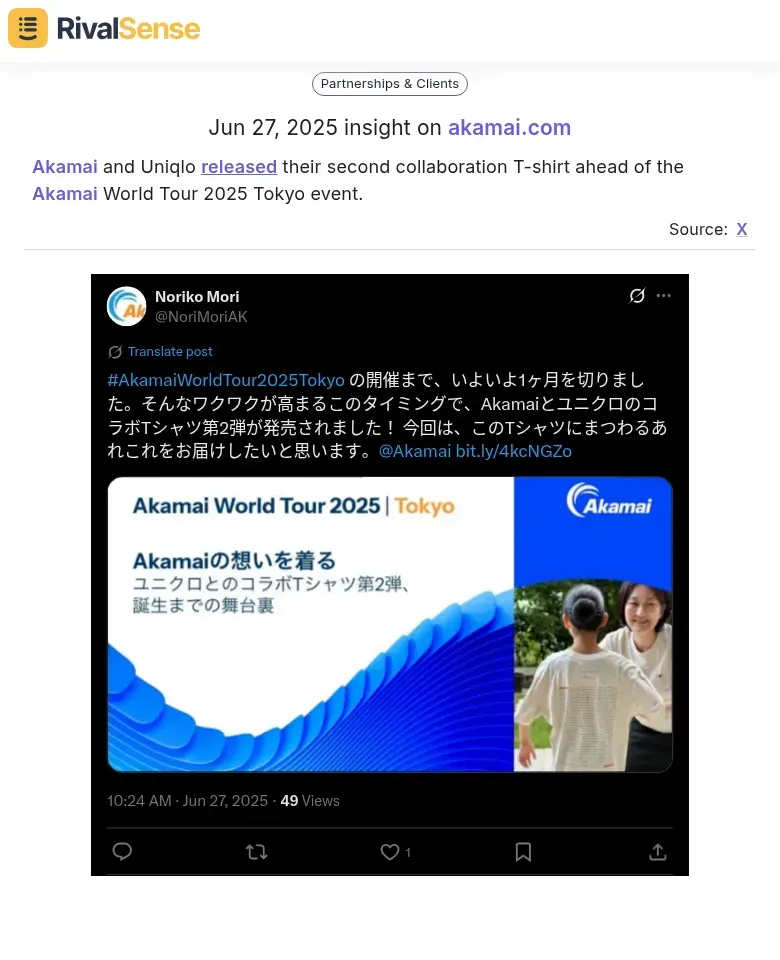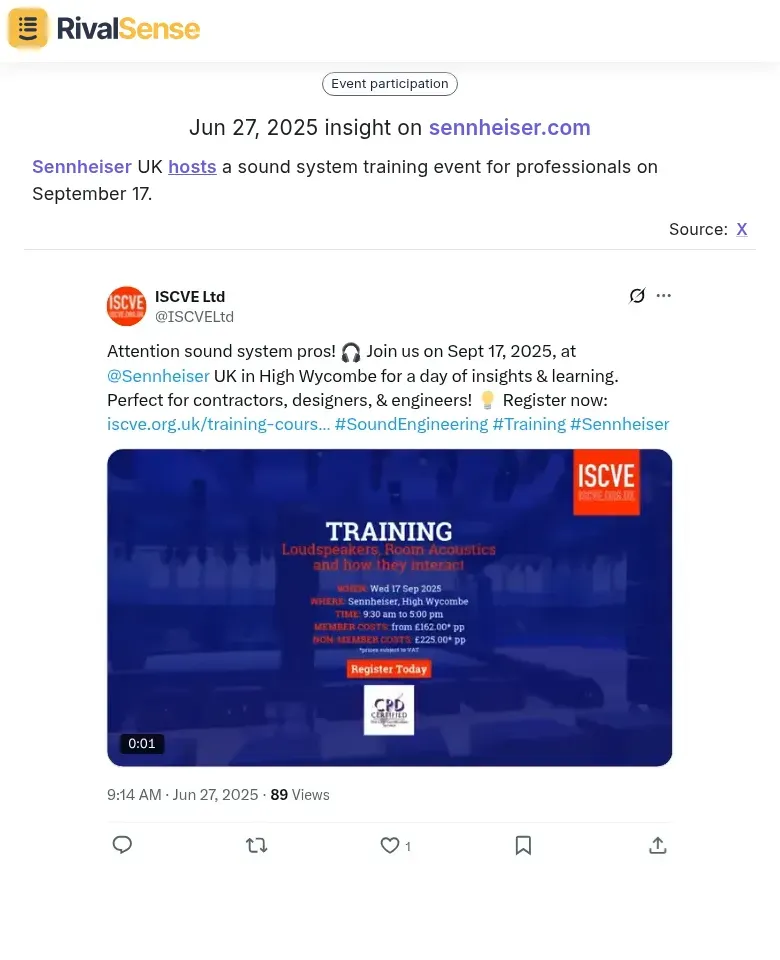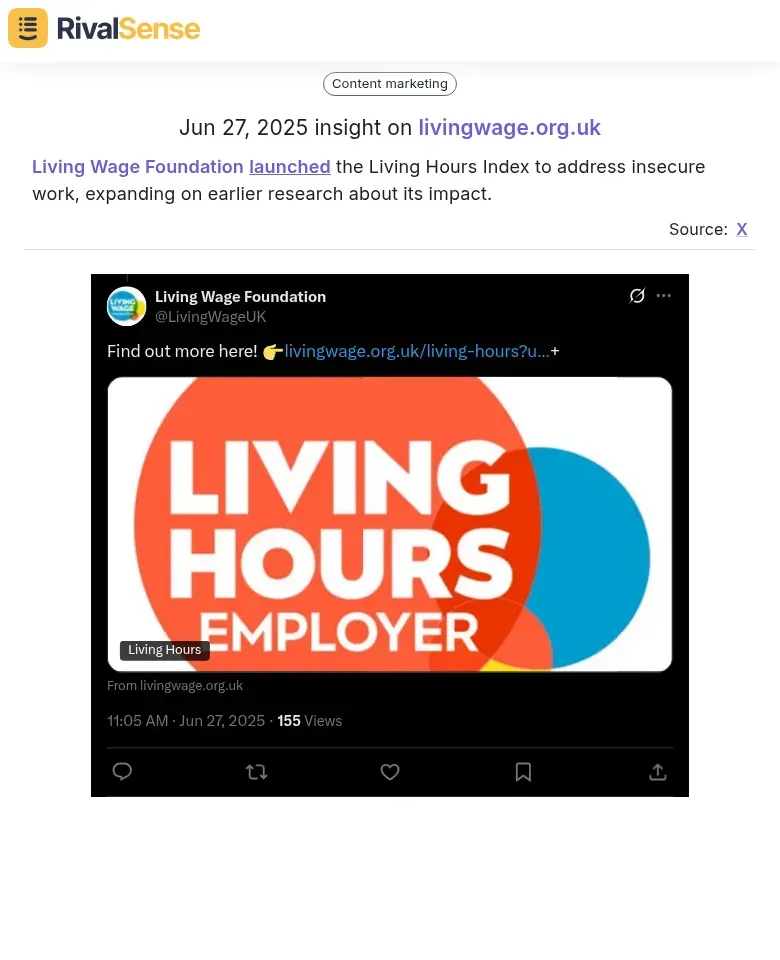Unlock Competitive Edge: How to Leverage Twitter for Strategic Insights
🔍 Introduction to Twitter as a Competitive Intelligence Tool
Twitter is an indispensable real-time intelligence hub for business leaders. Its public nature offers unfiltered access to competitors' announcements, customer interactions, and strategic shifts without intrusive tactics. For founders and CEOs, this platform delivers immediate insights into market movements, emerging threats, and untapped opportunities.
To maximize Twitter's potential:
- Organize competitors using Twitter Lists for centralized tracking
- Leverage Advanced Search for keywords like "launch" or "partnership"
- Track engagement metrics (likes, retweets) to identify resonant content
- Monitor customer feedback on competitors' tweets for pain points
- Set real-time alerts for immediate notifications of competitor activity
🚀 Analyzing Competitor Campaigns and Launches
Product launches and collaborations reveal critical strategic priorities. By dissecting timing, messaging, and audience targeting, you can anticipate market shifts and identify gaps in your own approach. Pay special attention to how competitors frame innovation or exclusivity in their announcements.
Example: Tracking Product Collaborations
Akamai and Uniqlo released their second collaboration T-shirt ahead of the Akamai World Tour 2025 Tokyo event:
Why it matters: Spotting such collaborations early reveals marketing focus and event-driven strategies, helping anticipate market moves.
Action Plan:
- Create keyword alerts for "collab", "launch", and "limited edition"
- Analyze visual storytelling techniques in product reveals
- Benchmark launch engagement against your initiatives
📅 Monitoring Competitor Events and Engagements
Events signal where competitors are investing resources and which audiences they're targeting. Webinars, training sessions, or conference participations often preview new strategic directions before formal announcements. Tracking these provides advance notice of market expansions.
Example: Event Monitoring
Sennheiser UK hosts a sound system training event for professionals:
Why it matters: Educational events indicate skill gaps competitors are addressing—intel that can shape your own training programs.
Audit Checklist:
✅ Event frequency and formats (virtual/in-person)
✅ Speaker profiles and partner involvement
✅ Post-event content recaps and attendee sentiment
📊 Tracking Competitor Research and Thought Leadership
Published research and indices unveil competitors' strategic priorities and emerging focus areas. These materials often signal market positioning shifts months before operational changes. Analyzing themes and data sources helps benchmark your own thought leadership initiatives.
Example: Research Initiatives
Living Wage Foundation launched the Living Hours Index addressing insecure work:
Why it matters: Such publications signal commitment to social issues that influence brand perception and industry standards.
Analysis Framework:
| Metric | Strategic Value |
|---|---|
| Research frequency | Indicates resource allocation |
| Data sources | Reveals partnership networks |
| Audience engagement | Measures thought leadership impact |
💬 Engaging with Competitor Audiences for Deeper Insights
Competitors' followers are goldmines of unmet needs and dissatisfaction points. By analyzing comment sentiment and recurring themes, you uncover opportunities to differentiate your offerings. Strategic engagement positions your brand as a solution provider.
Tactical Approach:
- Identify top 3 complaint themes in competitors' replies
- Track sentiment shifts after product updates
- Engage with value-added insights (not promotions!)
- Document language customers use to describe pain points
- Compare audience demographics across competitors
✅ Conclusion: Integrating Twitter Insights into Your Competitive Strategy
Consistent Twitter monitoring transforms raw data into actionable intelligence—revealing partnership opportunities, product gaps, and emerging threats. The key is systematization: establish weekly review rhythms, document findings in shared dashboards, and align insights with quarterly planning cycles.
Pro Tip: Combine Twitter intelligence with broader market scans. Platforms like RivalSense automate competitor tracking across websites, registries, and global sources—delivering product launches, pricing changes, and leadership moves in consolidated weekly reports.
Stop manual monitoring:
👉 Try RivalSense for free and get your first competitor report today!
📚 Read more
👉 Step-by-Step Guide to Competitive Intelligence in Fleet Management
👉 Leveraging Competitor Insights for Smarter Event Participation
👉 Decoding Geotab's Marketplace Expansion: Strategic Insights & Action Steps
👉 Mastering Market Entry Competitive Analysis: A Strategic Guide for Business Leaders
👉 5 Quick Hacks for Strategic Competitive Monitoring in Legal Compliance



